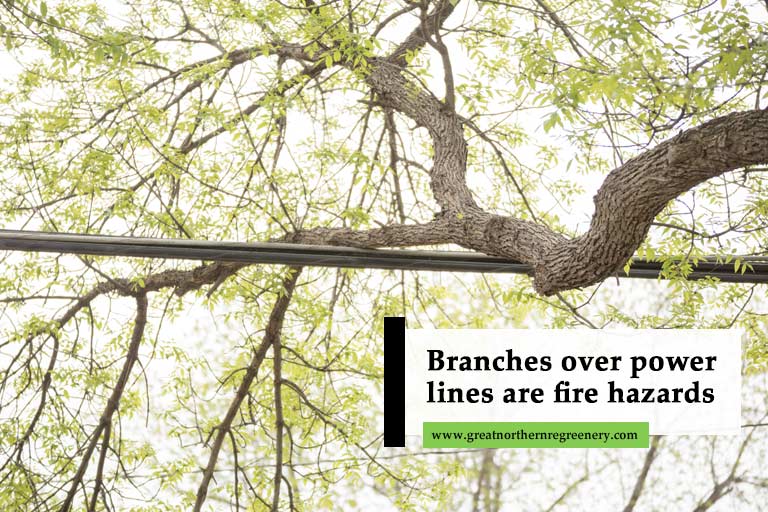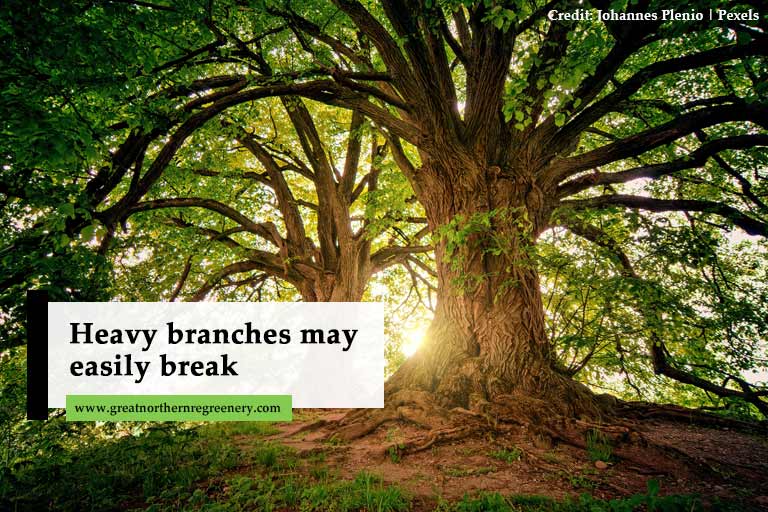Living among trees has numerous advantages, such as providing shade from the sun during the hot summer months and seeing the leaves change colour in the fall. While they are appealing to the eye, they do need some attention and upkeep. Leaving them unpruned might put you, your family, and visitors in danger.
You might believe that trimming your trees on your property is solely for cosmetic appeal, but you’d be wrong. While it’s true that tree pruning is crucial for things like curb appeal and house value, it’s also important for tree health, property protection, and cost savings.
When Should You Not Trim Trees
Often, pruning happens during winter, but knowing when the best time for pruning trees isn’t always as simple as it appears. There are several factors to consider, including the type of tree in question, insect infestation, disease susceptibility, and adjacent landscaping.
Here are some of the worst times to prune a tree:
- When It’s Wet
Avoid pruning if there has been significant rainfall recently or if morning dew is still present. When you prune while it’s wet, you may be spreading diseases to your plants.
This is due to the proliferation of bacteria, which is aided by wet weather. These microorganisms will spread like wildfire as a result of your fresh prune job. Wait till the sun has dried everything out.
- During Fall
With their changing colours and dropping leaves, the trees provide a lovely scene. You could feel compelled to go pruning to improve the appearance of the landscape. However, the worst season to prune trees is in the fall!
Pruning plants and trees foster fresh growth. Regrettably, these same plants are preparing to go dormant throughout the upcoming winter months. Pruning them then would just make them weaker.
Some days are still quite warm. If you prune on a hot day and then the temperature drops at night, the plant will suffer much more damage. Sap rises into the plant when you prune it. This sap freezes when the temperature dip below zero, resulting in an unpleasant sight.
Signs You Need to Prune Trees
There are several reasons why trees need to be trimmed. Here are 10 common signs:
- Broken Branches
Broken branches are the first clue that a tree needs to be pruned. You should prune any branches that are broken, splintering, or even bowing as soon as possible. These can become extremely dangerous if they break or weaken.
Because not all broken or splintering branches will be apparent, inspect your property before each season or after a particularly bad storm.
- Branches over Power Lines
 If the branches of a tree are growing too close to or even over power lines, it’s a solid sign that it needs to be pruned. Stray branches on power lines might pose a concern and is a fire hazard. Pruning trees with branches that are growing over your roof or other structures on your property is necessary. An expert should inspect and prune it.
If the branches of a tree are growing too close to or even over power lines, it’s a solid sign that it needs to be pruned. Stray branches on power lines might pose a concern and is a fire hazard. Pruning trees with branches that are growing over your roof or other structures on your property is necessary. An expert should inspect and prune it.
- Cracks in the Bark
Cracks in the bark are a clear indicator of a diseased or dying tree, especially if you notice two or more at once. These are usually caused by rotting, which can spread and, if not treated properly, require the complete removal of the tree. Cracks in the bark or branches of trees can potentially signal the presence of a pest or disease. The tree will most certainly perish if left alone.
Pruning the branches with deep cracks is a quick remedy. This helps save the tree by allowing it to recover and grow more healthily.
- Crossing Branches
Crossing branches, like malformed trees, are a clear indication that it’s time to prune. These branches can be quite damaging to trees if left unchecked. They’ll deteriorate and die over time because they’re not growing healthily. The decay will not only harm these branches but will also disperse to other branches throughout the tree. In the worst-case situation, your entire tree will deteriorate and will need to be removed. However, this can be avoided with some quick cutting of crossing trees!
- Dead or Diseased Limbs
If your tree is having health problems, it’s a solid sign that you need to get them pruned. If you don’t prune your tree as soon as you observe unhealthy traits, the disease may develop swiftly and may even kill it. If this is the case, you might want to consider chopping down the tree.
While diseases do not kill all trees, you may observe some deadwood. These dead branches or sections of your trunk could be signs of an insect infestation. To keep your tree healthy, make sure you remove any dead or dying limbs. If you don’t catch it early and act swiftly enough, it might spread throughout the remainder of the tree and cause even more damage.
- Dense Foliage
This is a significant symptom that you might not notice immediately.
Your tree may appear to be robust and sturdy, but it could already be too dense if you can’t see through the branches. If they’re too dense, the branches and limbs can get too heavy. During strong winds or storms, these branches are highly dangerous, posing a risk of property damage.
Take a look at some of your trees to avoid this. Get your clippers out to prune a tree if you can’t see through the branches.
- Misshapen Trees
While you may enjoy your tree’s unusual growth pattern, it is not necessarily good for the tree. Misshapen trees are those that grow in the incorrect direction, extending outward instead of vertically, resulting in uneven weight distribution.
Branches of deformed trees can fall under their weight and cause property damage. Because pruning encourages new development, shaping a tree regularly keeps it from growing faster than it should.
- Too Much Growth
 If you find your trees are growing swiftly, it may be time to prune them. This will prevent any harm to the property and keep them looking healthy. This is especially true for trees you’ve planted as part of a landscaping project. It’s easy for trees to be overgrown and eat up space.
If you find your trees are growing swiftly, it may be time to prune them. This will prevent any harm to the property and keep them looking healthy. This is especially true for trees you’ve planted as part of a landscaping project. It’s easy for trees to be overgrown and eat up space.
Some trees prefer to grow outward rather than upward. If this is the case, you’ll need to keep the branches trimmed often. The last thing you want is for them to get overly heavy, splintering and breaking.
- Trees Damaged by Storm
Although tree branches are usually relatively sturdy, they can be damaged by storms such as heavy snow, rain, or even wind. If you’ve recently had a lot of wind or rain, you should consider going around your property and inspecting your trees.
Storms are to blame for the majority of the weakened and shattered limbs you’ll come across. If left unchecked, it can potentially represent a threat to your possessions.
- Weak Branches
If trees become plagued with pests or diseases, a variety of things can happen to them. You may be able to solve the problem before a branch or limb dies, but you may still have some weak branches to deal with. It’s time to prune if you notice them bending or splitting easily. Weakened branches are more prone to break and injure someone. You’ll prevent accidents and encourage new growth for healthy limbs by simply pruning the branches.
If you’re having difficulties with some trees, you should hire a qualified tree specialist to prune them. For tree pruning in Newmarket, call Great Northern Regreenery at (905) 775-7444 today!





